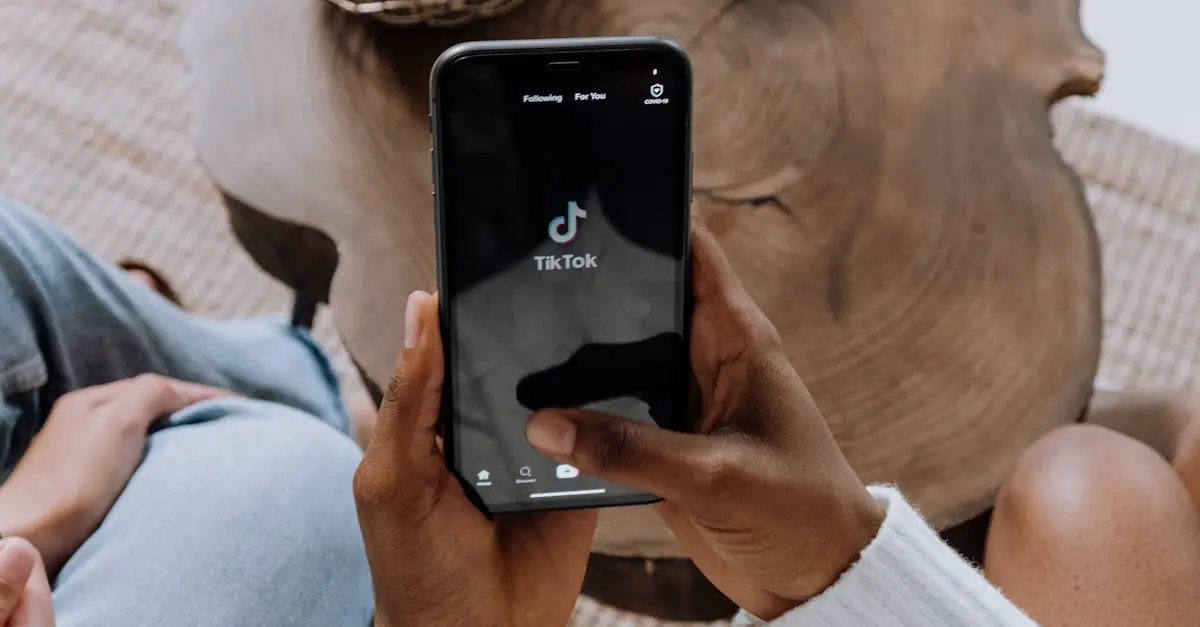Ever found yourself frantically scrolling through your iPhone, convinced that a rogue app has vanished into thin air? You’re not alone. Many users experience that moment of panic when their favorite app seems to play hide-and-seek. Spoiler alert: it’s probably not a ghost but something a bit more mundane.
In a world where apps multiply like rabbits, keeping track can feel like a full-time job. Whether it’s a simple case of misplacement or a more complex issue like restrictions or storage problems, understanding why an app is MIA can save the day. Let’s dive into the mystery and uncover the secrets behind your elusive apps, so you can get back to enjoying the digital life without the drama.
Table of Contents
ToggleUnderstanding App Visibility on iPhone
Users often encounter issues locating apps on their iPhones. Several factors contribute to this problem, which can usually resolve with a few simple checks.
Common Reasons Apps Go Missing
Misplaced apps frequently occur when users unintentionally move them to different home screen pages. Hidden apps may reside in folders or the App Library. Restrictions, often set by parental controls, can limit access to certain apps. Users may also delete apps unknowingly, leaving them absent from the device. Storage constraints can hinder app visibility; without sufficient space, some apps may not appear. Sometimes, the issue stems from installation problems that prevent apps from appearing on the device.
Checking for Updates and Compatibility
Update checks play a crucial role in app visibility. Users can navigate to the App Store and ensure all installed apps are up to date. Outdated apps might not function correctly or appear in search results. Compatibility issues arise when the device’s software version is incompatible with the app requirements. Keeping the iPhone’s operating system updated enhances performance and ensures installed apps work as intended. Regularly checking for updates ensures users access the latest features and fixes, improving overall app visibility.
Searching for Apps on Your iPhone
Finding apps on an iPhone can sometimes be challenging. Various features and settings can help users locate their missing apps, ensuring a seamless experience.
Using the Search Function
Using the search function simplifies locating apps. Users can swipe down on the home screen to access the search bar. Typing the app’s name reveals results instantly. If the app is installed, it appears at the top of the list for quick access. Search results also include suggestions, making it easier to find similar apps. Voice search works as well, allowing users to speak the app name for convenience. This feature enhances the overall app discovery process.
Exploring the App Library
Exploring the App Library uncovers hidden apps. Located at the end of the home screen pages, the App Library showcases all installed apps in one place. Users can browse through categorized folders, making it easier to find an app related to a specific function, like games or productivity. Additionally, a search function within the App Library allows users to type and quickly locate any app. These organized categories help streamline navigation and resolve app visibility issues effectively.
Managing App Settings
Managing app settings ensures users can locate and access their desired applications. Checking configurations like restrictions and home screen organization plays a crucial role in app visibility.
Checking Restrictions and Parental Controls
Restrictions can limit access to certain apps, making them hard to find. Users often overlook settings related to content and privacy restrictions. To check these, navigate to Settings and select Screen Time. From there, tap Content & Privacy Restrictions, and then Allowed Apps. Ensure the toggle for the app in question is enabled. Parental controls may also categorize apps based on age-appropriate content. Adjusting these settings may restore access to the missing apps.
Ensuring Home Screen Organization
Home screen organization impacts app accessibility significantly. Users can easily misplace apps across multiple pages or within folders. To combat this, regularly organizing apps into folders helps maintain clarity. Additionally, utilizing the App Library can streamline access to all installed apps. Swipe left until reaching the App Library and browse through the categorized folders. Searching for an app within the App Library can reveal its location, enhancing the overall experience on the iPhone.
Reinstalling Missing Apps
Reinstalling missing apps can often solve the issue of inaccessible applications. Users can redownload apps easily through the App Store or restore them from an iCloud or iTunes backup.
Redownloading from the App Store
Users should open the App Store to begin redownloading apps. Tapping on the Today tab at the bottom provides access to the main store. Next, users can tap on their profile photo, then select Purchased to view previously downloaded apps. Typing the app name into the search bar also works fine if more accurate retrieval is necessary. Once found, users simply tap the download button, which looks like a cloud with an arrow, to restore the app. This process makes redownloading quick and efficient, ensuring access to favorite applications without hassle.
Restoring from iCloud or iTunes Backup
Restoring missing apps from an iCloud or iTunes backup can serve as an effective solution. For iCloud, users must go to Settings, tap their name, and select iCloud. Choosing Manage Storage and then Backups shows the available backups for devices. When using iTunes, users must connect their iPhone to a computer and open iTunes; from there, selecting the device icon allows for restoring from a backup. Users need to keep in mind that restoring a backup may revert the phone to an earlier state, so any data changed after the backup won’t be available. The restoration process can effectively bring back deleted apps and their associated data.
Finding a missing app on an iPhone can be a straightforward process once users understand the common reasons behind the issue. By utilizing the search function and exploring the App Library, they can quickly locate misplaced applications. Adjusting settings related to restrictions and parental controls ensures that access to apps isn’t unintentionally blocked.
If all else fails, users have the option to reinstall apps or restore them from backups, bringing back their favorite tools with ease. With these strategies in hand, there’s no need for frustration. Users can enjoy a seamless app experience on their iPhones once again.




